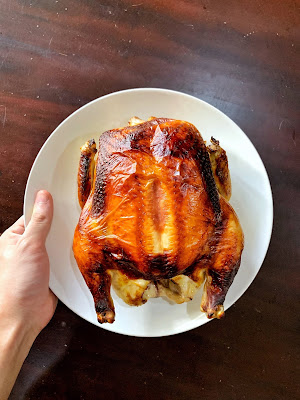As part of my quest to learn more about traditional desserts, I found this cute little recipe. It's a Cantonese dessert that's not very commonly found, and I don't think I'd seen one before this. It's a quivering bowl of milk pudding, made via an interaction between an enzyme found in ginger, which breaks down and reshapes milk proteins into a more solid texture.
200ml (1 cup) low-fat milk
8g (2tsp) granulated sugar
STEPS
Peel the ginger. Using the most abrasive side of a box grater, grate the ginger as finely as you can. Grating whole ginger is preferable to using small pieces of ginger, to avoid any grating mishaps. Set a fine sieve over a bowl, and press the grated ginger through the sieve to collect the ginger juice.
Portion 1 tablespoon of ginger juice in a bowl. Set the bowl aside.
In a small saucepan set over medium heat, combine milk and sugar. Stir occasionally, keeping a close eye on the milk. When the milk reaches 70°C, remove the pan from the heat (as a rough guide, condensation from the cold milk by the sides of the pot would have fully evaporated around 60C, so that's when you should start using your thermometer.)
Pour the warmed milk into the bowl containing ginger juice. Without stirring, leave the mixture to set in the bowl, about 10 minutes. Serve warm.




































